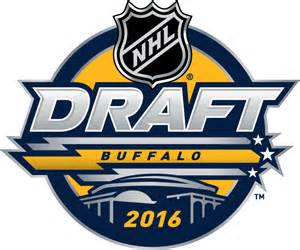
Where the 2016 Draft Class falls into the Penguins prospect pool
The Pittsburgh Penguins 2016 draft class saw them select one goaltender, four defensemen and one forward.
The Penguins going heavy with defensemen was a stance Jim Rutherford planned to take but the way the board played out, Pittsburgh passed on going defense in Round 2 when they held the 55th and 61st overall selections.
The team considered trading up into the mid-40’s to select a defenseman of interest and felt the price wasn’t worth it. The scouting staff was pleased with how things played out in getting goaltender Filip Gustavsson at No. 55.
Pittsburgh had Gustavsson rated at the No. 1 goalie on their board.
“Surprised he was still there at our pick, so we really couldn’t pass on him,” GM Jim Rutherford told reporters on Saturday.
“Our first pick, Filip Gustavsson, was in our opinion the best goalie in the draft,” director of scouting Randy Sexton said in speaking to reporters on the draft floor. “He’s a technically very strong goalie, he’s got tremendous rebound control and tremendous poise and mental toughness. He didn’t play on the greatest junior team in Sweden, their national team was just okay. But he helped them win several medals in the tournaments over the course of the season because of his outstanding play.”
Sexton said there are some similarities to Matt Murray from a mental and technical standpoint, though, Murray is taller.
Goaltending Prospect Pool
With Matt Murray graduating to the NHL and becoming the Penguins’ No. 1 goaltender, Tristan Jarry entered the draft weekend as the Penguins top goalie prospect. He’s reign as the Penguins No. 1 goaltending prospect is now short-lived.
Gustavsson now has that honor and immediately becomes the Penguins No. 1 goaltending prospect as the Penguins believe he has great potential to be a No. 1 NHL goaltender.
When the Penguins traded up for Jarry in 2013, also selecting him in the second round, they felt the same way but scouts now project Jarry’s ceiling as being more of a No. 2 NHL goaltender than a true No. 1.
Jarry went 17-13 with a 2.69 GAA and .905 save percentage in his first season with Wilkes Barre.
2012 4th round pick Sean Maguire enters the summer as the Penguins No. 3 goaltending prospect in the Penguins system. Maguire, 23, sat out the 2014-2015 season at Boston College due to a medical redshirt. He came back in 2015-2016 going 13-9-1 with a 2.41 GAA and .920 save percentage.
Maguire’s ceiling is one of a minor league goaltender.
Forward Prospect Pool
After going goaltender at No. 55, Jim Rutherford wanted to go with a defenseman at No. 61, but the Penguins European scouts were adamant about taking Kasper Bjorkqvist (6-1, 200).
“Our European scouts, they were close, and they followed him, and they loved this player,” Rutherford said.
Bjorkqvist is more of an all-around player who the Penguins feel could develop into a punishing bottom-6 player than a high-end skilled player.
“He has a really strong low game,” European scout Patrik Allvin said. “He’s strong on the puck, goes to the net. He’s hard to play against.”
Bjorkqvist will play at Providence college this fall and Randy Sexton believes he’s a year or two away from being ready to turn pro.
“We saw Bjorkqvist at the World juniors. Had a 4th line role there, going to be playing at Providence college [in fall]. We think he’s a year or two away from turning pro. Physically very strong, he’s got great hockey sense, overall skill set very strong,” Sexton said.
Where does Bjorkqvist fall in the Penguins’ prospect pool?
The forward group is headlined by Daniel Sprong and Jake Guentzel, the two consensus top forward prospects in the organization. Some in the organization even view Guentzel slightly ahead of Sprong.
While few spots are available in Pittsburgh, Guentzel could push for NHL time by mid-season.
Sprong’s 2016-2017 season is going to be basically lost with major shoulder surgery that will sideline him 8 months.
The second tier of forwards in the Penguins system are Scott Wilson (soon to be graduating to a full-time NHL role), Oskar Sundqvist, and Dominik Simon.
The next group of upside forwards in the system include Josh Archibald, whose north-south speed could see him rise the organizational depth chart this season, J.S. Dea, a smallish center whose skilled game flashed in training camp and 2012 second round pick Teddy Blueger.
Blueger has not developed as quick as the Penguins have hoped but the organization hasn’t written him off. They view his playmaking game and two-way play as being key areas where he has a chance to still develop into an NHL player down the road.
Bjorkqvist is intriguing because the Penguins don’t really have a player like him in their forward group who has a combination of skill/size/physicality. While not as big as Milan Lucic, he plays a similar type of bruising style that had him rated on the Penguins board a lot higher than the scouting services out there.
Conflicting Opinions on Defensemen Selected
To read this insider news, subscribe to get “Inside Access”!

